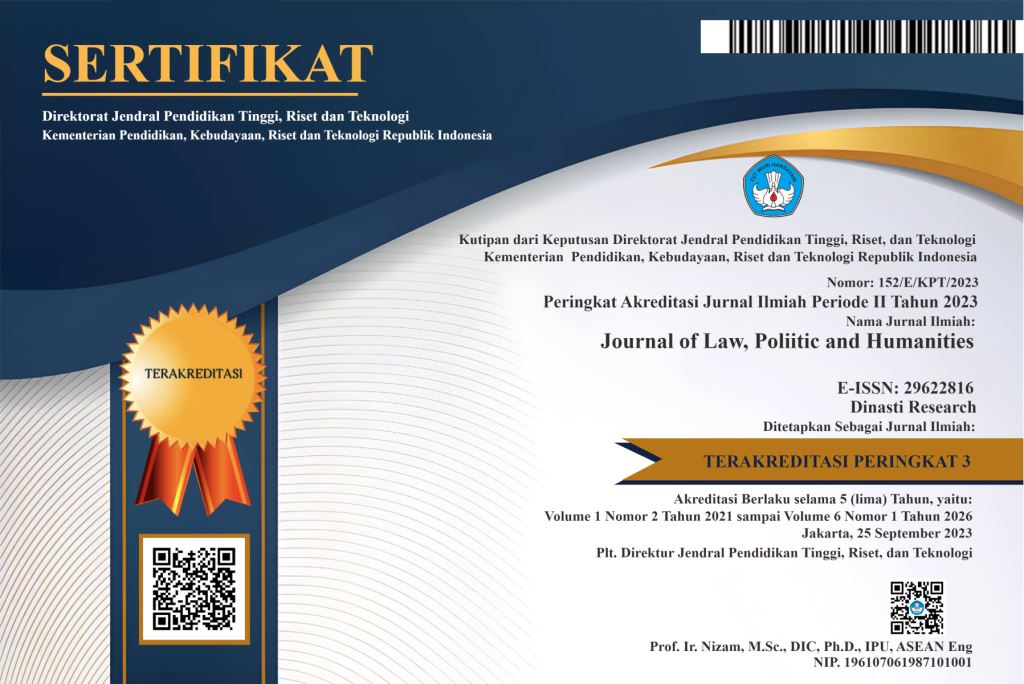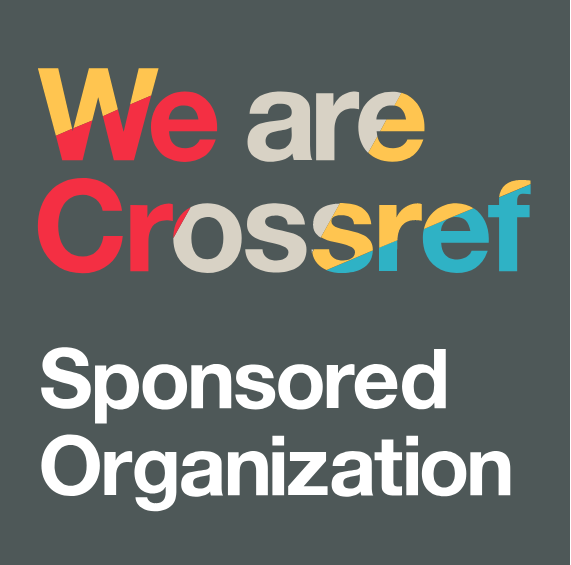QRIS as a Single Payment Gateway as a Solution for Payment Efficiency and Legal Protection for e-commerce Consumers Through a Comparison With China
DOI:
https://doi.org/10.38035/jlph.v5i3.1339Keywords:
Consumer Protection, E-Commerce, Single Payment GatewayAbstract
The increasing interest in shopping through e-commerce is accompanied by consumers' desire for easy, fast, and efficient payment methods, leading to a decline in cash usage as transactions can be conducted without spatial or temporal limitations through various payment gateways. In response to this phenomenon, Indonesia introduced a national payment gateway called QRIS. However, QRIS still faces several weaknesses, particularly in terms of effectiveness and consumer protection, which necessitate improvements. A single payment gateway is considered an effective solution to address these issues. This study used the statute approach and the comparative approach. It examined laws and regulations related to payment systems and consumer protection in e-commerce implemented in Indonesia, with China serving as a comparative study. The study results indicate that certain features of QRIS are not yet adaptive to current cutting-edge technologies, highlighting the need for more specific regulatory provisions in several Indonesian laws, particularly the importance of independent regulations governing e-commerce to create inclusivity in digital transactions.
References
Aprianto, Naerul. (2021). Peran Teknologi Informasi dan Komunikasi Dalam Bisnis. International Journal Administration, Business, and Organization. (2)1.
Asmaasyi, Alifian. (2022, August 22). Intip Kelebihan dan Kekurangan ShopeePayLater. Bisnis.com.https://finansial.bisnis.com/read/20220822/563/1569207/intip-kelebihan-dan-kekurangan-shopeepaylater.
Aulia, Sisca. (2020). Pola Perilaku Konsumen Digital Dalam Memanfaatkan Aplikasi Dompet Digital, Jurnal Komunikasi. 12(2).
Bank Indonesia. (2019). QR code Indonesian Standard (QRIS). bi.go.id
Basri, Herlina. (2020). Perlindungan hukum terhadap konsumen dalam melakukan transaksi e-commerce ditinjau dari Undang-Undang Perlindungan Konsumen Undang-Undang Nomor 8 Tahun 1999 (Studi Kasus Kerudungbyramana Bandung). Pamulang Law Review. 2 (2).
Dedi, Marsudi. (2021). Negara Kesejahteraan (Welfare State) dalam Perspektif Pancasila. LIKHITAPRAJNA Jurnal Ilmiah. 23(2).
Efendi, Jonaedi. Metode Penelitian Hukum Normatif dan Empiris. (Jakarta, Prenadamedia Group, 2018).
Fadjarajani, Siti et al. Metodologi Penelitian: Pendekatan Multidisipliner. (Gorontalo: Ideas Publishing, 2020).
Fatima, Nashra. (2024, October 25). eCommerce Payments in China: Alipay. WeChat & Top Payment Methods. Ecommercedb.com, https://ecommercedb.com/insights/ecommerce-payments-in-china-top-providers-consumer-preferences-for-alipa y-and-wechat/4823
Herryani. (2023). Enhancing Legal Protection for Digital Transactions: Addressing Fraudulent QRIS System in Indonesia. Jurnal Rechtsidee. 11(1).
Huang, Jie. (2017). Comparison of E-commerce Regulations in Chinese and American FTAs: Converging Approaches, Diverging Contents, and Polycentric Directions?. Netherlands International Law Review. 64.
Imanuel, Axel et al. (2024). Studi Perbandingan Hukum Perlindungan Konsumen Di Indonesia dan Tiongkok. Jurnal Multidisiplin Ilmu Akademik. 1(6).
Kajian Kemitraan BSKLN Kementrian Luar Negeri Republik Indonesia. (2021). Keketuaan Indonesia di Asean 2023: Mengoptimalkan Penguatan Sektor e-commerce ASEAN Dalam Rangka Percepatan Pemulihan Ekonomi.
K, Hidajat & Salini. (2023). Benefits of Using a Payment Gateway. 277.
Li, Jun et al. (2019). Mobile Payment with Alipay: An application of extended technology acceptance model, Ieee Access. 7. 50381.
Lukito, Ratno. (2022). Compare But Not to Compare: Kajian Perbandingan Hukum di Indonesia. Undang: Jurnal Hukum. 5(2).
Marzuki, Peter Mahmud. Penelitian Hukum: Edisi Revisi, (Jakarta: Kencana Prenada Media Group, 2005).
Muchtar, Evan. (2024). Quick Response Code Indonesia Standard (QRIS) E-payment adoption: Customers Perspective. Jurnal Cogent Business & Management. 11(1).
Muhaimin. Metode Penelitian Hukum. (Mataram: UPT University Mataram Press, 2020).
Putri, Annisa et al. (2021). Tanggung Jawab Para Pihak Dalam Transaksi Jual Beli Online. Jurnal Lex Privatum. 9(6).
Rahayu, Titin. (2024). Analisis Perlindungan Hukum bagi Pelaku Usaha Penyedia Sistem Pembayaran Qris (Quick Response Indonesian Standard) berdasarkan Undang-Undang Nomor 8 Tahun 1999. Proceedings Series on Social Sciences & Humanities. 17. 446-447.
Recca Hapsari, (2021), Dispute Settlement Analysis and Refused Claims In Payment Gateway Transactions On Paypal Indonesia, Lambung Mangkurat Law Journal, 6(2).
Samodra, Fitriyani. (2023, November 2). E-Wallet adalah Dompet Digital, Ketahui Jenis dan Kelebihannya. Liputan6.com. https://www.liputan6.com/hot/read/5439316/e-wallet-adalah-dompet-digital-ketahui-jenis-dan-kelebihannya?.
Sarifuddin, Abdul & Iwan Erar. (2023). Implementasi Keadilan Sosial dalam Mewujudkan Negara Kesejahteraan (Welfare State) Indonesia. National Conference on Law Studies (NCOLS). 5(1).
Sausi & Mtebe. (2021). Revolutionization of revenue collection with government e-payment gateway system in Tanzania: A public value creation perspective. East African Journal of Science Technology and Innovation. 2(3).
Shishkov, Lyubomir. (2024, April 23). Payment Gateway, What is it and how does it work?. Emerchantpay.com. https://www.emerchantpay.com/insights/what-is-a-payment-gateway-and-how-does-it-work/.
Simangunsong, Edward & Tama Amelia. (2024). Studi Komparatif China’s Personal Information Protection Law Dengan Undang-Undang Perlindungan Data Pribadi Sebagai Bentuk Perlindungan Hak Privasi Masyarakat Indonesia. Jurnal Hukum dan HAM Wara Sains. 3(3).
Siregar, Lismayana et al. (2020). Perkembangan Teknologi Informasi Terhadap Peningkatan Bisnis Online. Jurnal Ilmiah Manajemen dan Bisnis. 2(1).
Syahrir, Syafrida Hafni. Metodologi Penelitian. (Yogyakarta: Penerbit KBM Indonesia, 2021).
Tantri, Dian et al. (2024). Urgency of E-Commerce Act for Consumer Protection (Comparative Study in Indonesia, Singapore, and China). Jurnal Pena Justitia. 23(2).
Tarantang, Jefry et al. (2019). Perkembangan Sistem Pembayaran Digital Pada Era Revolusi Industri 4.0 Di Indonesia. Jurnal al-qardh. 4(1).
Tian, Yang et al. (2023). Moderating Role of Perceived Trust and Perceived Service Quality On Consumers’ Use Behavior of Alipay e-wallet System: ThePerspectives of Technology Acceptance Model and Theory of Planned Behavior. Human Behavior and Emerging Technologies. 1(1).
Tim Penulis, (2024, March 3). China Bertekad Menjaga Keamanan Nasional dengan Undang-undang Baru. Voaindonesia.com. www.voaindonesia.com/a/china-bertekad-menjaga-keamanan-nasional-dengan-undang-undang-baru/
Tim Penulis. (2024, June 7). How Integrating Alipay Cross-Border Payment Helps Ecommerce Business Grow. Woocommerce.com. https://woocommerce.opmc.com.au/2024/06/07/integrating-alipay-cross-border-payment-helps-ecommerce-businesses-grow/
Wahyudin, Nanang. (2022). The Utilization of E-Commerce and QRIS as Digital Payment Tools to Improve Sales Performance Through Competitive Advantage in MSME. Journal of Consumer Sciences. 7(2).
Xu, Yuqian et al. (2024). Mobile payment adoption: An empirical investigation of Alipay. Information Systems Research. 35(2).
Yadita, Devina et al. (2024). Tinjauan Yuridis Penipuan Sumbangan Berbasis Quick Response Code Indonesian Standard (Qris) Palsu. Jurnal Hukum dan Kewarganegaraan. 4(4).
You, Chuanman & Qingxiu Bu. (2020). Transformative Digital Economy. Responsive Regulatory Innovation and Transformative Digital Economy. Responsive Regulatory Innovation and Contingent Network Effects: The Anatomy of e-commerce Law in China, European Business Law Review. 31(4).
Yuxiao, Li. (2016). Improvement of the Cybersecurity Legal System in China. Strategic Study of CAE. 18(6).
Zed, Mestika. Metode Penelitian Kepustakaan. (Jakarta: Yayasan Pustaka Obor Indonesia. 2008).
Downloads
Published
How to Cite
Issue
Section
License
Copyright (c) 2025 Matthew Jakaria Sitanggang, Imam Haryanto

This work is licensed under a Creative Commons Attribution 4.0 International License.
Authors who publish their manuscripts in this journal agree to the following conditions:
- The copyright on each article belongs to the author(s).
- The author acknowledges that the Journal of Law, Poliitic and Humanities (JLPH) has the right to be the first to publish with a Creative Commons Attribution 4.0 International license (Attribution 4.0 International (CC BY 4.0).
- Authors can submit articles separately, arrange for the non-exclusive distribution of manuscripts that have been published in this journal into other versions (e.g., sent to the author's institutional repository, publication into books, etc.), by acknowledging that the manuscript has been published for the first time in the Journal of Law, Poliitic and Humanities (JLPH).


























